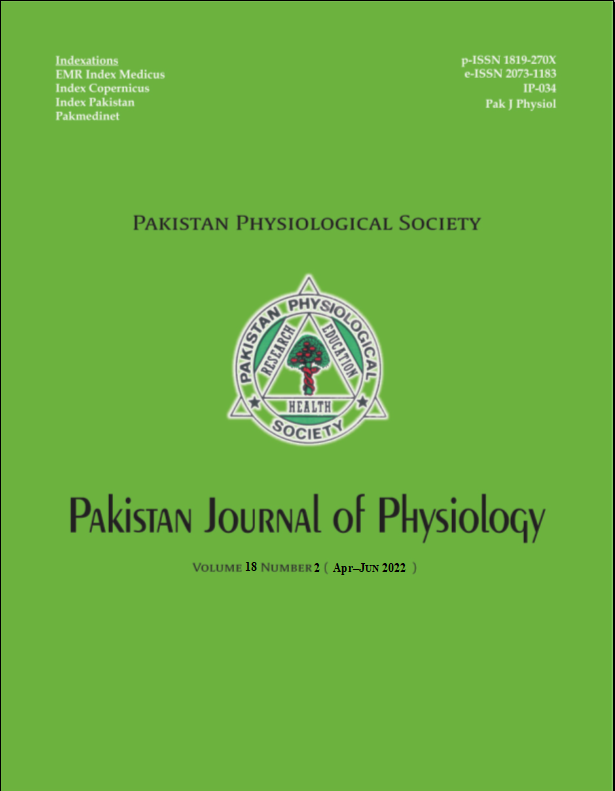FREQUENCY OF MICROALBUMINURIA IN HYPERTENSIVE PATIENTS WITH ACUTE ISCHEMIC STROKE
DOI:
https://doi.org/10.69656/pjp.v18i2.1434Keywords:
Albuminuria, hypertension, diabetes mellitus, ischemic stroke, peshawarAbstract
Background: Stroke, and its most common variant ischemic stroke, is one of the major causes of morbidity and mortality worldwide. Besides conventional risk factors, microalbuminuria (MA) is considered to be associated with atherosclerosis, hence ischemic stroke. Early detection of microalbuminuria may help in identifying hypertensive patients at high risk of ischemic stroke. The aim of current study was to determine the frequency of microalbuminuria in hypertensive patients with ischemic stroke. Methodology: This cross-sectional study was conducted at the Department of Medicine, Hayatabad Medical Complex Peshawar, Pakistan from July 2020 to June 2021. A total of 196 hypertensive patients of either sex with ischemic stroke were included in this study. They were tested for microalbuminuria in a 24-hours urine sample using Pyrogallol Red method. Urine albumin concentration of 30–300 mg/day was considered as microalbuminuria. The frequency of microalbuminuria was stratified according to age and gender using Microsoft Excel sheet. Results: The participants were aged 30–70 years and most of them (88, 45%) were in the age group 61–70 years. Majority (122, 62%) of the patients were male. Microalbuminuria was identified in 92 (47%) patients with slight male predominance (57, 62%). Conclusion: Given the high frequency of Microalbuminuria in hypertensive patients with acute ischemic stroke, microalbuminuria is a useful and inexpensive parameter in identifying hypertensive patients at increased risk of ischemic stroke.
Pak J Physiol 2022;18(2):35?7
Downloads
Downloads
Published
How to Cite
Issue
Section
License
The author(s) retain the copyrights and allow their publication in Pakistan Journal of Physiology, Pak J Physiol, PJP to be FREE for research and academic purposes. It can be downloaded and stored, printed, presented, projected, cited and quoted with full reference of, and acknowledgement to the author(s) and the PJP. The contents are published with an international CC-BY-ND-4.0 License.











